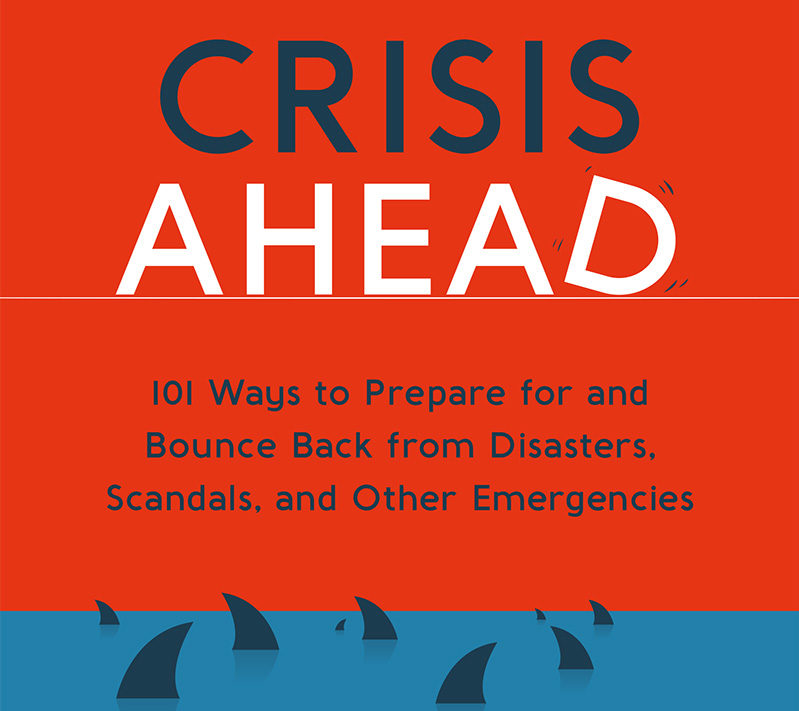The Important Roles War Rooms Play Before And During A Business Crisis
Commentary from crisis management expert Edward Segal, author of the bestselling and award-winning Crisis Ahead: 101 Ways to Prepare for and Bounce Back from Disasters, Scandals, and Other Emergencies (Nicholas Brealey, 2020)
Recent news that England’s National Health Service said that it will establish war rooms to help prepare for and respond to the impact of the coming winter underscores the important role the command centers can play in managing crises.
“These centers will be expected to manage demand and capacity across the entire country by constantly tracking beds and attendances,” The Guardian reported. “They will be operated by clinicians and experts who can make quick decisions about emerging challenges in the health service, NHS England said.”
In the corporate world, war rooms can play similarly important roles to help business leaders prepare for, manage and recover from a crisis.
Preparing For Worst-Case Scenarios
“Companies use war rooms to prepare for worst-case scenarios, improve collaboration during events, and help responders adapt and communicate more effectively during crises,” Carla Bevins, an assistant teaching professor of business communication at Carnegie Mellon University’s Tepper School of Business, said via email.
Avoiding Misccommunication
A war room “is a centralized center where information from numerous sources is processed, and open communication creates a clear voice of response,” Bevins observed.
They “are useful when a larger number of people are needed to resolve an incident and when cross-functional involvement is necessary. If teams are working independently on the same issue, this can lead to miscommunication, and it can prolong the issue. War rooms allow all teams to work on a resolution together while communicating openly and adapting quickly. War rooms ensure there are no delays in communicating new and essential information,” she noted.
“Effective crisis communications effort requires coordinated internal collaboration and parallel processing,” and observed that “war rooms create a dynamic environment where these conversations can happen.”
“Make sure that your war room is well equipped with all the tools you’ll need before you need them,” Bevins advised.
Helping To Build Crisis Management Skills
A war room is most important before a crisis breaks out “because it’s in the war room where you rehearse, prepare and build skills in crisis management,” Andy Whitehouse, an assistant professor at Columbia University who teaches crisis communications, said via email.
“In my class, I argue that companies should regularly bring together the crisis team in the war room to role-play a crisis—since this is the only way to ensure that the team has the experience, capabilities and comfort to manage a crisis when it happens. A live crisis in a war room is not the moment to find out that an executive isn’t ready for game time,” he advised.
“Who should be in the war room? It depends on the scenario. Communications, legal, HR and operations will almost always be present, but other leaders, such as the chief technology officer or the head of security, might be there for a specific crisis,” Whitehouse recommended.
‘Use War Rooms Judiciously’
“Use war rooms judiciously. If you continue to use a war room when it’s not needed, its effectiveness can decline. Crises are inherently stressful events where teams work long hours for many days. As the leader of a war room, lead by example by remaining calm and collected,” Bevins advised.
“When you act as a role model, you help create a psychologically safe space where team members see they have an open line of communication. This can encourage them to speak up when they become stressed or. need support,” she observed.
Size Does Not Matter
“I was trained in IT using war rooms starting back in the 90s for outages at the large financial services firms,” Karolyn Hart, founder and president of InspireHub, recalled via email. “I think what would surprise people is that they aren’t just effective for large companies but even for small tech firms. Perhaps, especially so.”
“Our team has been remote for 9+ years, and we have a virtual war room…Even today, with all [the] automated alerts and technology now available, nothing replaces everyone being gathered together,” she noted.
‘No Chicken Little Moments’
“Our war room is only called when a certain…criteria that we have established is not being met. Everyone in the company understands what that is and the steps that are necessary to call a war room. There are no ‘chicken little’ moments because when this happens, we know for certain it’s serious. The alerts go out, and the team assembles,” Hart said.
“We assemble in our war room, and the team knows their roles. (Who is troubleshooting, who is running liaison to customers (if impacted), who is testing, etc.).
“When I arrive [at the war room], my job is to keep the team calm. Science has proven that software developers’ ability to troubleshoot goes down with anxiety and stress. I ask questions along with everyone else as we troubleshoot, but I feel my biggest contribution is keeping them calm,” she commented.
‘Not Just For Firefighting’
War rooms can be useful even when there is no immediate crisis, such as preparing for the threat of an economic-related challenge like inflation and recession, according to Ram Charan, a former Harvard business professor and co-author of Leading Through Inflation, said in a statement.
“An ideal war room is not just for firefighting; it is also strategic. Early warning signals will tell you not just where the problems are emerging but also their pace. They allow you to be predictive, prescriptive, and preemptive.
“If the CEO doesn’t take the initiative to create a war room, the board should propose it. Maybe do an off-site with the top team. Conversely, the CEO may want to call a special meeting of the board solely to discuss how inflation and recession will affect the company.
“If you don’t have a war room, you’re falling behind,” Charan warned.

